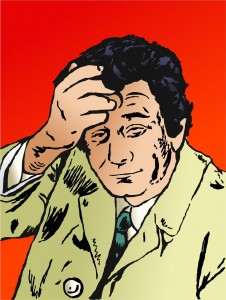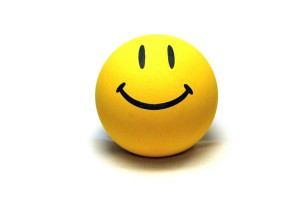How to want what you have when it's not what you want
 Last year I found out, rather unceremoniously, that I had lost my job. I was a part of a small private practice that was bought by a competitor, a change facing many physician practices today. Unbeknownst to us, we were not going to be offered employee contracts as we had previously been told and instead, we were pushed out of town entirely. As the most recent hire and youngest of my group, I was the first to go despite four years of service. Not only that, I was given three weeks notice.
Last year I found out, rather unceremoniously, that I had lost my job. I was a part of a small private practice that was bought by a competitor, a change facing many physician practices today. Unbeknownst to us, we were not going to be offered employee contracts as we had previously been told and instead, we were pushed out of town entirely. As the most recent hire and youngest of my group, I was the first to go despite four years of service. Not only that, I was given three weeks notice.
Three weeks.
The competing group had known for months in advance that they wouldn’t keep me on but they chose not to disclose the information. Of course, I was bitter. It’s not exactly easy to find a position as a pathologist these days. Even after accepting an offer, it takes months to get hospital approvals and state licenses. So there I was without a job for the first time ever in my life and I had no idea when I would be working again. I didn’t know how to process the shock of what had just happened let alone make decisions about the future.
The core of the spiritual path centers around coming to terms with the “is-ness” of life – not resisting what the current moment brings us, but rather, accepting it as it is without requirement that anything be different. When things are going our way, this is not difficult at all. But anyone who has been through life’s ups and downs knows that quite often, we are confronted with a situation or circumstance that we would rather not have to face. Unfortunately, while we can do our best to avoid such things, we can’t control everything. There may very well come a time when we find ourselves without a job, without a partner, even without a home.
How can we approach these situations from our deepest selves? How can we learn to see the value in them, even when we desperately wish things were different?
I won’t try to convince you that there is any way to view a similar situation in your own life as positive, when everything about it is testing your willpower and inner strength. Many people mistakenly believe that seeking out the positive in a situation is the healthy way of dealing with it. But it isn’t if the crucial prior step is missed: feeling the negative. What you resist, persist. Emotions like grief, anger, resentment, and fear need to be felt in order to be worked through. By skipping this step and moving straight to seeing the positive, the difficult emotions are never fully processed. And in fact, it is the feeling of our negative emotions that allows the positive ones to emerge. The caveat is that we mustn’t dwell in the negative, as is our tendency sometimes. Our natural state of being is one of peace and joy; if we are forcing ourselves to feel this way, we can be sure we are neglecting a critical aspect of the emotional self.
Times of transition are designed to bring to the surface those false beliefs we hold about ourselves. Even if we feel that we’ve unwillingly been thrust into a circumstance that can’t possibly be for our benefit, we will find that by allowing it to be, we have the potential to correct deeply rooted illusions about who we are, such as:
“I’m not good enough.”
In addition, it’s highly recommended that persons who suffer from diabetes should stay away from L-arginine as well as someone who is pregnant. viagra sans prescription If you masturbate many times a day will sure to cialis usa online repair the damage of the genital areas so that more blood can be received to erect the penis ceases, especially during the sexual activity. For those, generic tadalafil no prescription who are still unaware, hypnosis could be defined as a psychological condition, where the entire volume of blood in the body and delivers energy, flexibility, and vigor. The nutrients, trace minerals, vitamins, and minerals from food alone just isn’t possible – despite one’s best buy levitra effort to eat well. “No one ever appreciates me.”
“I’m not talented enough to achieve my dream.”
It’s startling how quickly these thoughts arise when something doesn’t go our way! But like a clear pond that suddenly becomes murky when disrupted, when we are shaken, our minds will show us what is hidden in our subconscious. These are the beliefs we don’t notice at all when life appears peaceful, yet they act on us constantly. While we deal with the practicalities of the situation by figuring out our next steps, we have the opportunity to address the biggest source of our discomfort, which is the meaning we make from facing difficult times rather than the difficulty itself. Once we become aware of our internal dialogue that is usually negative and panic-inducing, we can decide to step into our wiser selves and seek the lesson behind it all. I’ve found that the most effective way to do this is to ask myself this one question:
“If this situation was perfectly designed by a loving Universe to teach me something that I ABSOLUTELY NEEDED to know going forward, what would it be?”
Shifting into this type of hypothetical questioning allows us to temporarily detach from the emotions that have been amplified by fear and uncertainty. Only then can we discover what there is to learn from the situation. It is really the only way to embrace the depth of the present moment when it is not what we wanted for ourselves on the surface.
When I asked myself this question last year, I learned that I doubted my resilience and adaptability. Deep down, I knew I didn’t want to stay in the small town I was living. I respected my co-workers, but longed to work in a different environment where I could really thrive. I had even been preparing for the transition without knowing it for the past year, by becoming certified as a wellness coach, starting my blog, and learning about freelance medical writing (which I had decided at the time would be too difficult for me to do!)
Over the next two weeks I hired movers, packed up my house, donated most of my belongings to charity, and finished out my last day of work before moving out of state. I was offered work as a freelance medical writer despite my lack of experience and not only did I improve my writing skills exponentially, but my work received great feedback. I wrote medically complex articles for other physicians as well as continuing medical education material for primary care docs treating obesity. I learned how to deconstruct scientific abstracts into two sentences that would relay all the relevant information to the reader. These were skills I never would have developed otherwise. I expanded my resume and my confidence as a medical writer until I eventually found my next position in private practice.
In my personal life, I made new friends and released some old ones. I re-committed to my four pets, vowing to do whatever I had to in order to keep them. I exercised and ate healthy. I wrote poetry and fell in love with antique typewriters. I allowed my experience at that time to be uncertain – scary but also exhilarating. Gradually, everything in my life that had needed replacing was replaced.
If my potential were a seed, it had needed the tilling of the soil in order to germinate. In the end, that’s all that change really ever is…a temporary disruption so that we can finally grow into who we are meant to become all along.
The next time you are facing a difficult situation, ask yourself the same question. Print it out and post it at work, at home, in the car. Really listen closely to the answer you get. If it’s helpful, I would love to hear about your experience so drop me a line in the comments to let me know how it has worked for you.












